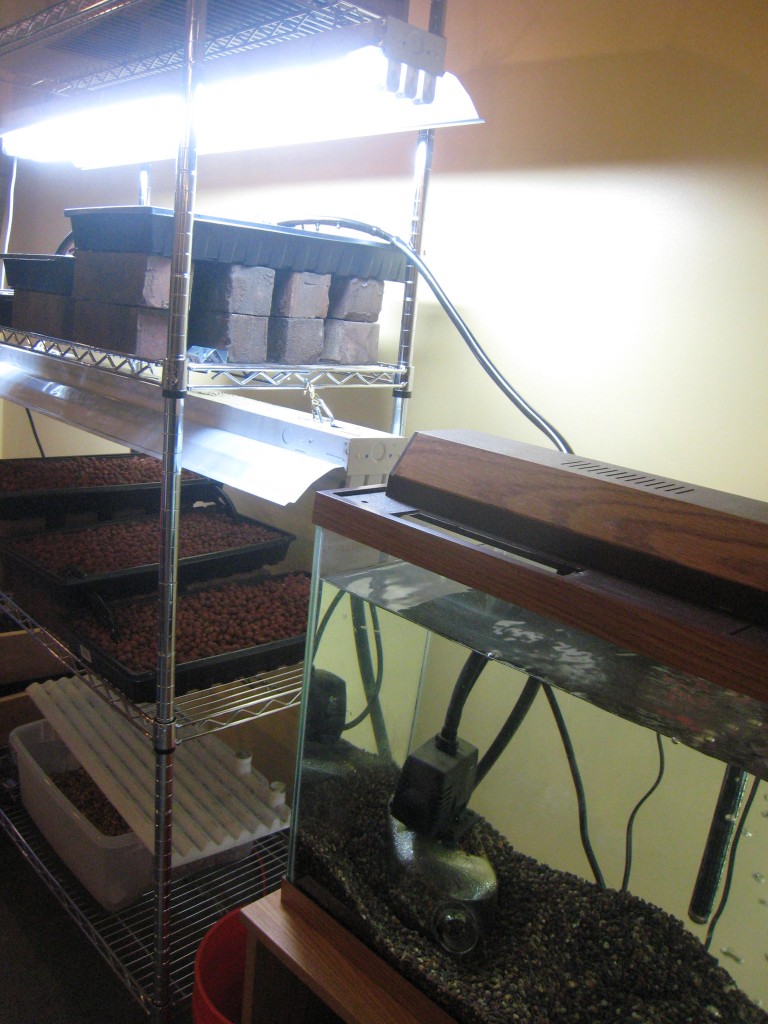Tag: Seafood Watch’
Seafood Watch
- by KitchenPantryScientist

Eat fish. It’s good for you .
We hear this message over and over, and it’s true. Fish is good for you.
Most people are also aware that eating to much fish can be bad for you too, if it’s the kind of fish that tend to build up heavy metals and pesticides. Farm-raised fish can be full of toxins, depending on how they’re raised. After all, you are what you eat, even if you’re a fish.
Sadly, our appetite for our finny ocean friends has brought many of our favorite fish to the brink of extinction. The majestic Bluefin tuna is almost certainly doomed and many other species are in trouble too. It may not seem like a big deal, but fragile ecosystems hang in the balance.
What can you do to help save our oceans? Visit the Monterey Bay Aquarium’s Seafood Watch website and print off a Seafood Watch Pocket Guide to help you select seafood that is both safe to eat and abundant enough to be well-managed and caught in environmentally-friendly ways. They even have a sushi guide.
If you want to shop at a grocery store that sells seafood responsibly, Whole Foods Market seafood department works harder than any other fish market (I know of) to help keep farmed seafood and the environment healthy. They use the Seafood Watch program for wild-caught seafood and buy the rest from Marine Stewardship Council Certified Fisheries. I love their seafood department and I can enjoy their sushi without guilt!
In other words, if you do your homework, you can feel even better about eating fish!
The Monterey Bay is one of my favorite places in the world, and the Monterey Bay Aquarium is an amazing resource teeming with ocean life. Click here to go to webcams at the aquarium where you can watch fish, sharks, jellyfish, otters and more!
Clean Water, Clean Fish, Green Plants
- by KitchenPantryScientist
I don’t usually buy farm-raised fish. Too many articles I’ve read tell me that the fish are polluted with chemicals and that fish-farming pollutes the environment. So, I dutifully check my Seafood Watch card and spend a little more on wild, sustainable, healthy fish.
When our Twin Cities blogging group, the Blog Pantry, met at Local D’Lish a few weeks ago, my eyes were instantly drawn to a fish tank set up at the back of the grocery store. The owner, Ann, told me they were setting up a small-scale aquaponics system that would use water from the fish tank to fertilize vegetables and herbs they were planning to grow in the store. I had seen a larger-scale version of the same thing on Will Allen‘s amazing 3-acre urban farm in the middle of downtown Milwaukee in the film “FRESH.”
Apparently, this type of closed loop, recycling system allows people to grow crops using less water while raising cleaner fish for food. Systems like these may revolutionize the way people farm in the future.
According to an article in the Christian Science Monitor,
“Recirculating aquaculture systems, or RAS, are closed-loop production systems that continuously filter and recycle water, enabling large-scale fish farming that requires a small amount of water and releases little or no pollution.
About 99.75 percent of the water in each unit is continuously cleaned and returned to the fish tanks. Manure filtered from the water during the recycling process is used as fertilizer on nearby farm fields. The nutrient-rich water can also be used to feed vegetables and herbs in large-scale aquaponics systems, which in turn filter the water for reuse.
One of RAS’s biggest benefits is its small “water footprint,” which opens the door to commercial fish production in areas with limited water resources. (The technology is proven for both fresh- and saltwater systems.)
Cool! Maybe someday, we’ll all have little kitchen gardens hooked up to fish tanks!
In the meantime, I look forward to a future where I can buy farm-raised fish with a clean conscience.
